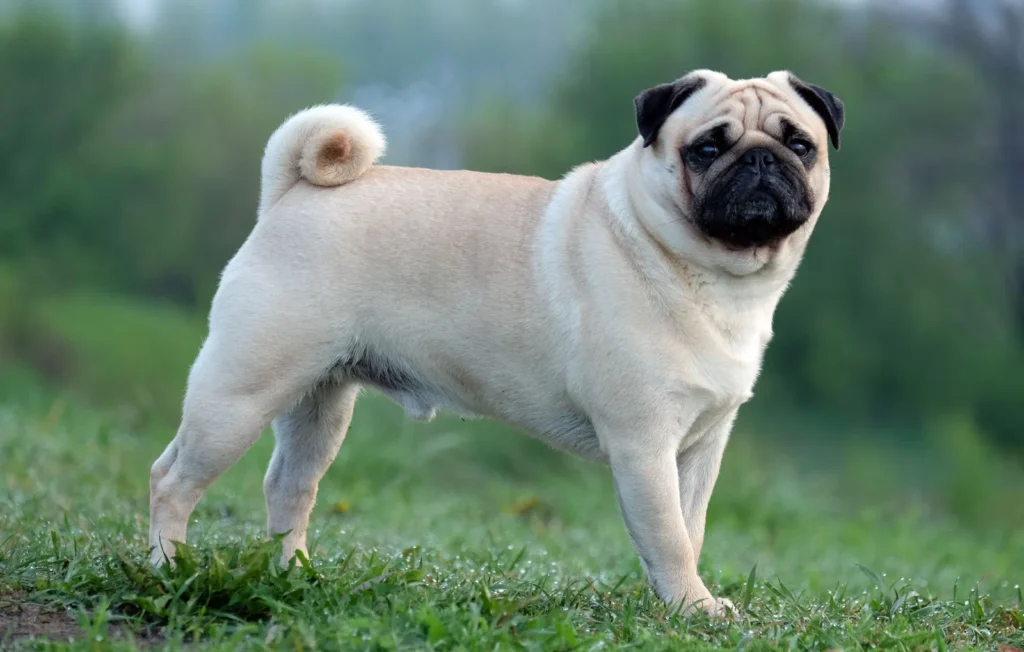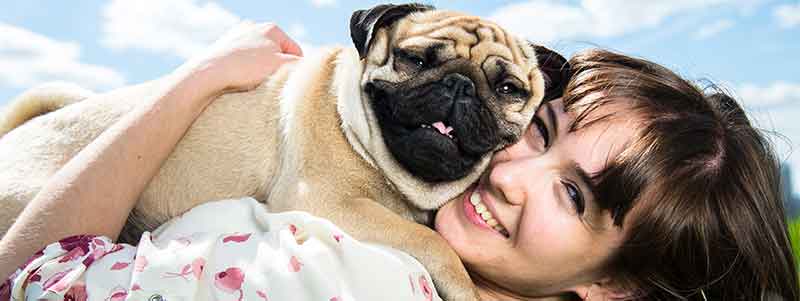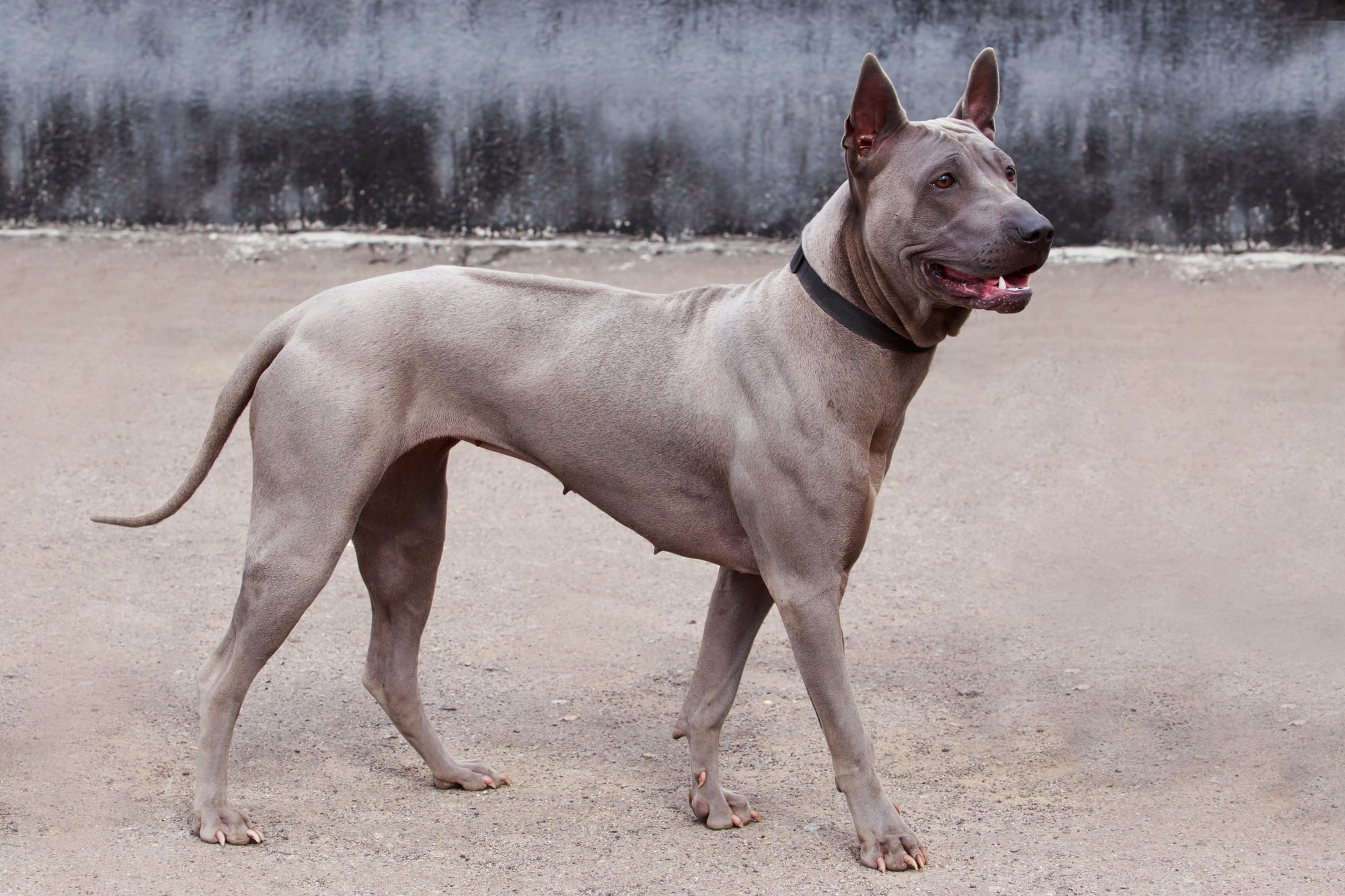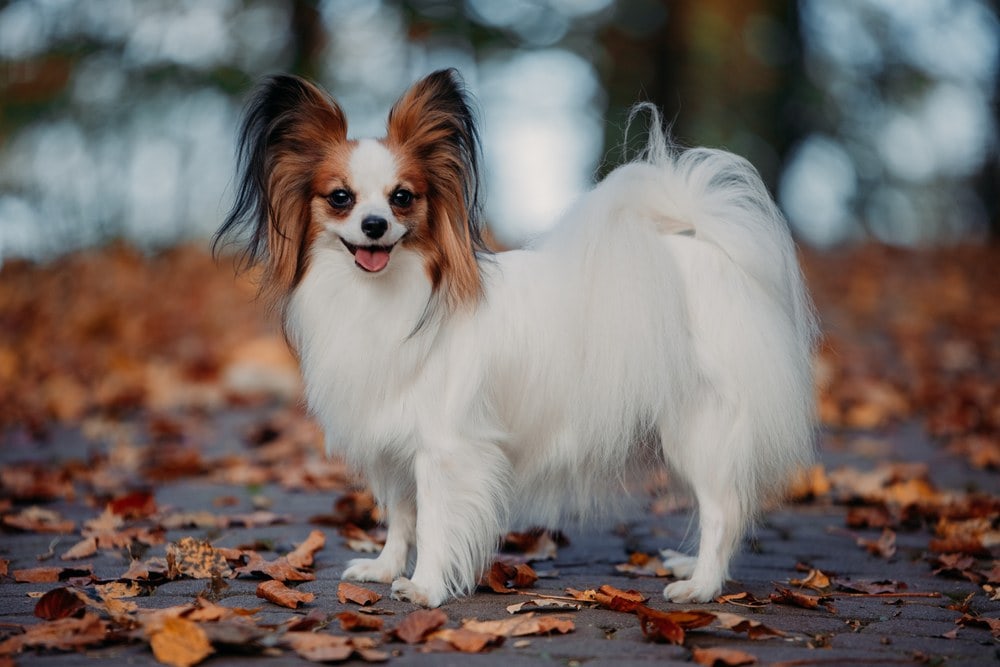
Introduction
The Pug is a small breed of dog that is known for its charming personality and distinctive appearance. With their wrinkled faces, curly tails, and affectionate nature, Pugs have become a beloved companion to many people around the world.
Originally bred in China over 2,000 years ago, Pugs were a favorite of the ruling elite and were considered a symbol of good fortune. They were brought to Europe in the 16th century and quickly became popular with royalty and the upper class.
Today, Pugs are recognized by their short, smooth coat in a variety of colors including fawn, black, and silver. They are known for their easy-going temperament and love to be around their owners, making them a great choice for families and those living in small spaces.
Temperament
Personality traits of the breed
Pugs have friendly, affectionate, and playful personalities, making them highly social dogs who enjoy following their owners around. They possess a sense of humor that can be entertaining to watch. Despite their small size, Pugs are brave and protective of their owners, and generally get along well with children and other pets, although they may be stubborn at times. Pugs are a low-energy breed, which makes them well-suited for apartment or small home living, but they still require daily exercise to maintain their health and happiness. Overall, Pugs are a delightful and charming breed that can make great companions for just about anyone.
Are pugs good for first time owners

Pugs can be a good choice for first-time dog owners. They have friendly personalities and are generally easy to care for. Pugs are also a low-maintenance breed, as they require minimal grooming and exercise. However, it’s important to note that pugs can have health issues related to their short snouts, such as breathing difficulties and overheating in hot weather. Additionally, pugs can be stubborn at times and may require patience and consistency in training. Overall, pugs can make great pets for first-time owners who are prepared to provide them with proper care and attention.
Aggression in Pug Dog
Pugs are generally friendly and social dogs, like any breed, they can display aggressive behavior in certain situations. Aggression in Pugs may be caused by factors such as fear, anxiety, lack of socialization, and medical issues. However, early socialization and training can help prevent aggressive tendencies from developing. Owners should also be aware of signs of aggression and seek professional help if necessary. Regular veterinary check-ups can help identify and address any underlying health issues that may contribute to aggression. Overall, aggressive behavior in Pugs is not common, but owners should be aware of potential causes and seek professional help if needed to maintain a happy and healthy relationship with their pet.
Health and Lifespan of Pug
The reported lifespan range for Pugs is typically between 12 to 15 years, although some Pugs may live longer or shorter depending on various factors such as genetics, diet, exercise, and overall health. Providing proper care and attention, including regular veterinary check-ups and a healthy lifestyle, can help ensure a longer and healthier lifespan for Pugs.
Food for Pug Dog
Best food for Pug Dog
Choosing the best food for a Pug dog involves considering their individual nutritional needs and preferences. Pugs are prone to obesity, so it’s important to provide them with a well-balanced diet that includes high-quality protein sources, complex carbohydrates, and healthy fats. Look for dog foods that are specifically formulated for small breeds and include ingredients such as chicken, fish, brown rice, and sweet potatoes.
Avoid dog foods that contain fillers, artificial preservatives, and by-products. It’s also important to feed Pugs in appropriate portions and limit treats to prevent overfeeding. Consulting with a veterinarian can help determine the best diet for a Pug dog based on their individual needs and health.
Are bananas good for pugs

Yes, bananas can be a healthy treat for Pugs in moderation. Bananas are a good source of vitamins and minerals, including potassium and vitamin C, which can benefit a Pug’s overall health. However, bananas are also high in sugar and calories, so they should be given in small amounts as an occasional treat rather than a regular part of their diet. Additionally, it’s important to remove the peel before feeding a banana to a Pug, as the peel can be difficult to digest and may cause digestive issues.
Training for Pug
To train a Pug, use positive reinforcement techniques emphasizing consistency, patience, and praise. Start with basic commands like sit, stay, and come, then progress to more complex instructions as the Pug becomes more responsive. Use treats, toys, and praise as positive reinforcement, while discouraging negative behavior. Short, frequent, and fun training sessions should be included, as well as socialization with people and other pets. Professional trainers can be helpful for first-time owners or specific behavior issues. Patience, consistency, and a positive outlook are essential for building a strong and healthy relationship with your Pug.
Conclusion
In conclusion, Pug dogs are an affectionate and playful breed known for their charming personalities. They make great companions for a variety of people, including first-time dog owners and apartment dwellers. While they may display aggressive behavior in certain situations, this is not typical for the breed and can often be prevented with proper training and socialization. When it comes to feeding Pugs, it’s important to choose high-quality food and avoid giving them certain human foods, like chocolate and grapes. Overall, Pug dogs can bring joy and companionship to their owners when properly cared for and trained.



